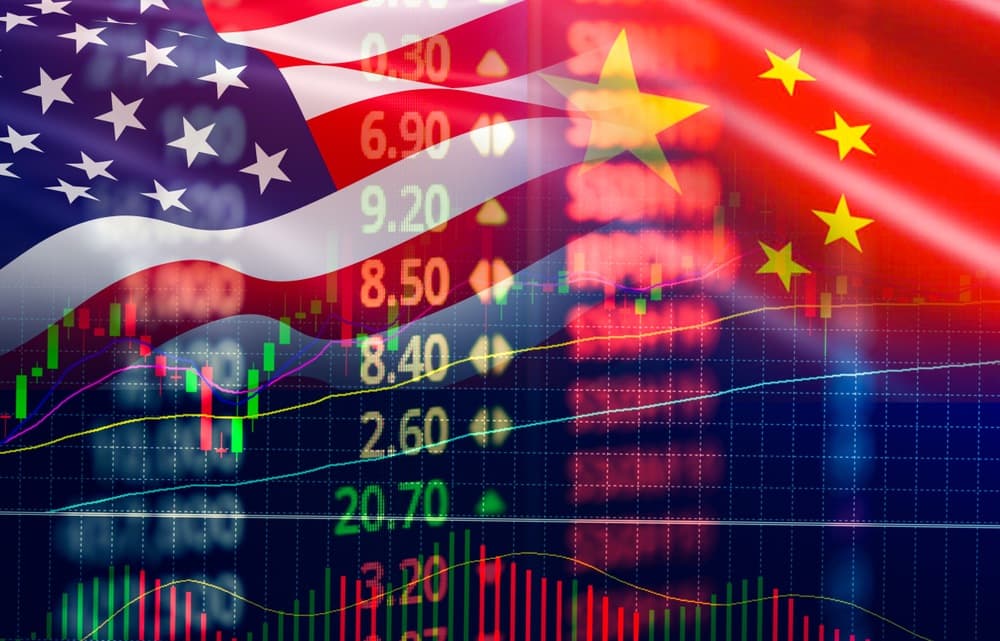Beneath the Surface
In An Election Full of Non-Issues, Here’s A Small One
August 20, 2024 • 9 minute, 15 second read

“Let me state the obvious. Illegal immigration is illegal, duh.”
– Senator John Kennedy (R-LA)
August 20, 2024 – “I have enjoyed your thoughts and advice in various publications for quite some time,” James gets off to a good start.
“But,” and there it is, “your commentary on immigration is puzzling.” Our reader continues:
It is difficult to discern if you thought our current state of illegal immigration was a good thing or not.
You indicate you have not been to the border – the real border. We lived 28 miles from the Mexican border while residing in New Mexico and now we live north of Eagle Pass, TX– a few more miles.
Rest assured that what America has experienced for over three years is a crisis of unprecedented proportions and negative effects – and that is euphemistic. Only a hopeless ideologue, fool or uninformed commentator would contend otherwise.
“I enjoy the columns,” comments a second, “but your view puts emotion well over harsh reality.” [Does it?]
“Drawing comparisons to long-term trends begs a lot of questions,” writes a third reader, “your ‘position’ really goes begging.”
We can’t help but agree. Our position really does go begging. Mostly because we don’t have one. We’re not convinced immigration is an “issue” at all.
Since labor was aggressively imported during the expansion westward in the 1800s, the share of immigrant population has been fairly consistent.
What’s probably more remarkable is the drop in immigrant share of the US population from 1913 until 1971.
There was a rapid decrease in immigrants legally coming to the United States following World War II when most of the global economy was dedicated to rebuilding from the disaster of a global conflict.
Returning veterans had plenty of time on their hands to help beat swords into plowshares. In 1945, after the conflict had ended, America held nearly 80% of the world’s manufacturing capability.
We’ll concede that recent trends at the Southern border have reached a 50-year high.
And the issue at our Southern border is that many millions are entering America without following the established procedures, which is illegal. And we’ll concede that the language on the political left has shifted from the term “illegal immigrant” to “undocumented migrant,” which has a different connotation. (Orwell would be proud.)
But to be frank, what’s different about the most recent “crisis” at the border seems to be emotionally driven because the undocumented trespassers are notably brown-skinned.
Since the enactment of the 1965 Immigration and Nationality Act, immigration has been dominated by people born in Asia and Latin America, rather than Europe. But whatever the race, or perhaps more accurately place, America has struggled with a large influx from a new ethnic group.
A century ago, the border In New England was Boston. We recall “Irish need not apply” signs from antique auctions around New Hampshire growing up.
Migrants from Italy were not welcome by the French descendants who settled New Orleans. A three second search on Google this morning, yielded a story of a public lynching of Italian immigrants in 1891 in New Orleans.
“You know these open borders are disastrously incompatible with a welfare state,” writes Scott, cutting closer to the chase.
“The foreign-born and their children overwhelmingly vote for socialism. It has not been a ‘secret’ plan to import Democrat voters. It has been blatantly obvious for over 50 years.”
It’s certainly true that before a welfare state, a new immigrant to the United States was expected to stay with a family or friend until they could get established.
Creating a permanent bureaucracy around immigration certainly makes it easy to dehumanize a process of people literally leaving their place of birth for a land with a better life.
But maybe the “imported voters” theory isn’t true, it just fits facts with prejudices.
Perhaps the real unease with today’s immigration crisis is that today’s new immigrants are largely low-skilled laborers. And that creates a massive supply that keeps wages low. Combined with an ever-rising cost of living, it’s one part of the financial squeeze hitting Americans right now.
Below, Michael Snyder tries to put his own finger on a real “issue” plaguing most voters… one that has the most difficulty finding political expression in this election cycle. Enjoy ~~ Addison
Thanks To The Cost Of Living Crisis, U.S. Household Debt Has Soared To The Highest Level Ever Recorded
Our entire economy is fueled by debt.
If going into more debt was suddenly banned the U.S. economy would instantly hit a brick wall. For the vast majority of us, our lifestyles simply cannot be funded by what we actually make. So we use debt to bridge the difference, and this has particularly been true during the cost of living crisis.
Total household debt has now reached a grand total of 17.8 trillion dollars, and we continue to pile up more with no end in sight…
A quarterly report published this month by the Federal Reserve Bank of New York on household credit and debt found that between the first quarter of 2021 and the second quarter of 2024, credit card debt surged 48.1% while household debt — which includes mortgages and auto loans — rose by 21.6%.
In dollar terms, credit card debt rose from $770 billion in early 2021 to $1.14 trillion in the most recent quarter, while household debt increased from $14.64 trillion to $17.8 trillion in the same period.
I did not realize that credit card debt had risen by more than 48 percent since the first quarter of 2021.
That is extremely alarming, because it indicates that millions upon millions of households are literally living on the edge of financial disaster.
And the fact that delinquency rates have been climbing just underscores how serious things have become…
Amid American households’ rising debt burdens, delinquency rates have grown as well. In the last 12 months, about 9.1% of credit card debt balances and 8% of auto loan balances moved into delinquency — the highest levels since early 2011 and the end of 2010, respectively.
The primary reason why U.S. households are racking up so much debt these days is because the cost of living crisis has made it very difficult to make ends meet.
One voter that was interviewed by Fox News admitted that her money “went a lot further four years ago”…
“My family’s income hasn’t changed, but our comfort level has significantly decreased,” stay-at-home mom and homeschool teacher Persson said.
“Money went a lot further four years ago. We were able to cover our bills and still have money saved. The economy has plummeted with the current administration, and to add on to that, where I live in California, the cost of living is much higher.”
Additionally, 44% of the survey respondents said they aren’t making enough take-home pay to cover their daily expenses.
Did you catch that last sentence?
Almost half of the entire nation is not “making enough take-home pay to cover their daily expenses” at this point.
Wow.
According to a recent survey that was conducted by CNN, the cost of living crisis is a major issue for approximately two-thirds of the country…
However, there are still times when the truth seeps out. CNN commissioned a well-constructed poll of about 2,000 random people to find out where they stand on personal finances. The headline number: nearly 40 percent of Americans are struggling to pay their bills. That is up from 28 percent from only three years ago, and a higher number than back in 2008–09, the period known as the Great Recession.
Two-thirds of people say that the number one issue they face is the cost of living and paying their bills. The typical American is spending nearly $1,000 more per month compared with three years ago just to pay living expenses. That is according to Moody’s, but it also fits with the intuition we all have.
This is why household debt levels have been exploding.
Most people are just trying to find a way to make it from one month to another.
Unfortunately, economic conditions are really starting to deteriorate and large employers are conducting mass layoffs all over the nation.
For example, General Motors just announced that over 1,000 salaried employees will be getting the axe…
General Motors is laying off more than 1,000 salaried employees globally in its software and services division following a review to streamline the unit’s operations, CNBC has learned.
The layoffs, including roughly 600 jobs at GM’s tech campus near Detroit, come less than six months after leadership changes overseeing the operations, including former Apple executive Mike Abbott leaving the automaker after less than a year in March due to health reasons.
Considering all of the credit card debt that is being piled up, you would think that Mastercard would be doing well, but they have also decided to fire lots of workers…
Approximately 3% of Mastercard’s workforce are facing layoffs, with the payment services company slated to finish a “majority of the notifications” in the third quarter, the company said in a Friday statement to FOX Business.
Not to be outdone, Cisco has determined that it is time for “7% of the company’s workers” to hit the bricks…
Cisco is embarking on a restructuring to “allow it to invest in key growth opportunities and drive more efficiency in its business.” That effort will involve laying off 7% of the company’s workers, according to a Securities and Exchange Commission (SEC) filing.
Last but not least, Intel has started the process of laying off approximately 15,000 workers…
Intel’s layoffs, announced Aug. 1, will result in some 15,000 employees losing their jobs.
They will arise out of a “comprehensive reduction in spending” that the tech giant said it was pursuing to “resize and refocus.” The company aims to trim costs by $10 billion in 2025 through its overall cost-reduction plan.
This is just the beginning.
A lot more layoffs are coming.
So if you have a job that you greatly value, try to hold on to it with all your might.
Meanwhile, we continue to get more economic numbers that indicate that the U.S. economy is rapidly heading in the wrong direction.
In fact, we just learned that the Conference Board’s index of leading economic indicators has fallen for the 29th month in a row…
And now, we have US Leading Economic Indicators down for their 29th straight month – at a level worse than the trough of COVID lockdowns…
How can anyone claim that our economy is moving in the right direction when our most important leading economic indicators have been falling for more than two years?
Let’s be honest.
Economic conditions are not good right now, and the outlook for the future is absolutely dismal.
We have been living on a sugar high. We have accumulated the largest mountain of household debt in the history of the world, the largest mountain of business debt in the history of the world, and the largest mountain of government debt in the history of the world.
Now all of those bubbles are starting to burst, and that means that a tremendous amount of pain is dead ahead. ~~ Michael Snyder, Substack
So it goes,
Addison Wiggin,
Grey Swan



